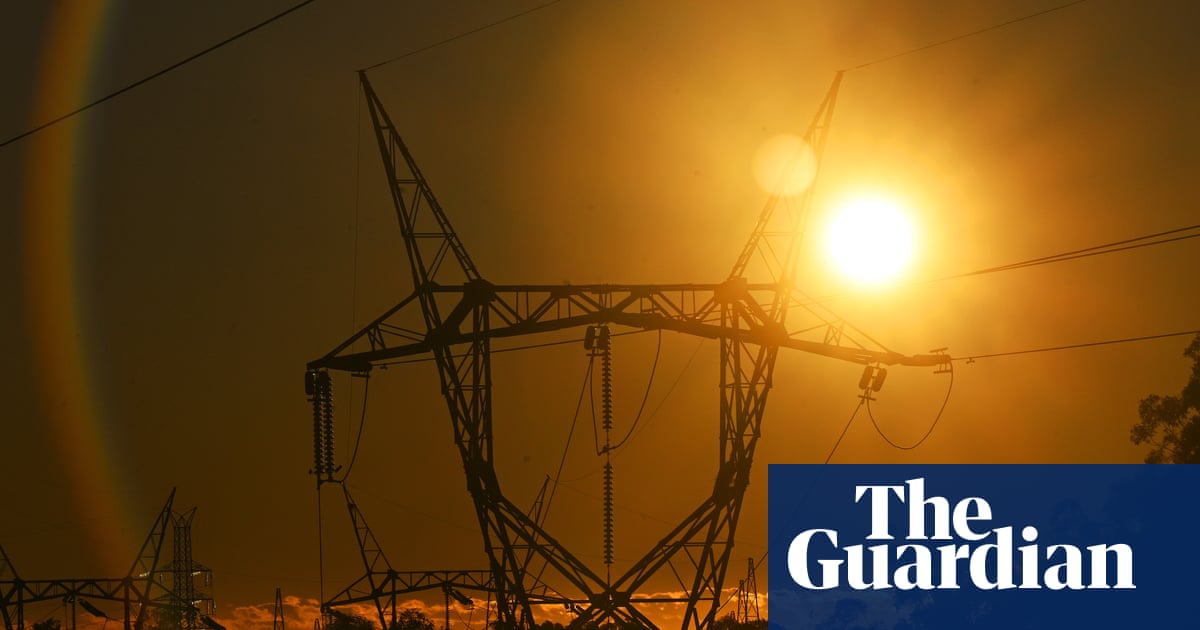Australia’s electricity market operator is considering new infrastructure options in the rollout of wind, solar and storage, in response to a 25-55% increase in the cost of overhead powerlines.
Itsdraft electricity network options report, released Friday, recognised the potential for local resources such as rooftop solar and battery storage to play a much larger role in the reliability and security of the power system, complementing transmission lines.
Aemo also flagged it would “revisit” transmission line projects – apart from those already committed or “anticipated” (under way) – in response to rising infrastructure costs and challenges in gaining community acceptance for new powerlines to regions with high wind and solar potential.
Sign up for Guardian Australia’s breaking news email
Feedback on Friday’s report will inform the next iteration of Aemo’s integrated system plan (ISP), the nation’s electricity transition roadmap, which is updated every two years to reflect changes in policy, costs and technology.
The federal government is aiming for82% renewable electricity by 2030.
Along with rising expense of overhead power lines, the estimated cost of new substations – which connect large, high-voltage powerlines to local power networks – also increased by up to 35% compared with cost estimates prepared for the 2024 ISP.
Transmission line and substation cost increases were primarily due to materials, equipment and workforce pressures, the high number of projects under way, their complexity and the need for additional community and landholder engagement along proposed transmission line routes, the report said.
Social licence was important, Aemo said, because while a significant number of Australians felt positive about the energy transition, many had limited understanding of the practical changes involved.
“Trust remains fragile and significant gaps in knowledge remain, with public confidence in government, industry and transmission developers remaining low, particularly in impacted communities,” the report said.
“The optimal transmission line is the one that you can actually get built,” said Alison Reeve, energy and climate change deputy program director at the Grattan Institute.
She said deeper engagement with communities living under proposed transmission lines was a necessary step, and that a “top-down, technocratic approach” had contributed to community pushback.
Andrew Bray, the national director of RE-Alliance, a not-for-profit focused on community advocacy during the energy transition, said: “The key thing is that communities are well-informed, that they have a clear sense of what the projects entail, and there’s transparency around the process for decision-making.”
Bray welcomed Aemo’s greater emphasis on engagement and issues important to regional communities such as agricultural land use, First Nations heritage and community sentiment. “That’s absolutely a good thing, and it’s something we’ve been advocating for ourselves for many years,” he said.
Sign up toBreaking News Australia
Get the most important news as it breaks
after newsletter promotion
Prof Bruce Mountain, head of the VictoriaEnergyPolicy Centre, said Aemo’s report recognised that a swift transition to renewable energy relied on working “with the grain, rather than against it”.
He said that due to the higher-than-expected costs and community impacts, “these big, 500kV bulk transmission lines have been struggling everywhere”.
“The towers are very big, easements [land-use corridors] are very wide, and so the land-use impacts are huge.”
Mountain has long advocated for improving the capacity of local networks and maximising the use of rooftop solar and storage potential in cities and towns, alongside “judicious” use of transmission lines.
Aemo’s report said the distribution network would play an increasingly important role in delivering reliable and secure energy by linking and coordinating rooftop solar and household batteries, and other distributed resources, as part of one integrated power system.
Reeve agreed that maximising opportunities on the distribution network made sense, so long as regulators took care to avoid gold-plating (unnecessary investment that leads to higher costs for consumers).
“The chunk of generation that’s coming from rooftop solar is enormous,” she said. “Most of that is on the distribution network, which means if you’re not planning for it, you’re actually missing a big part of the picture.”
